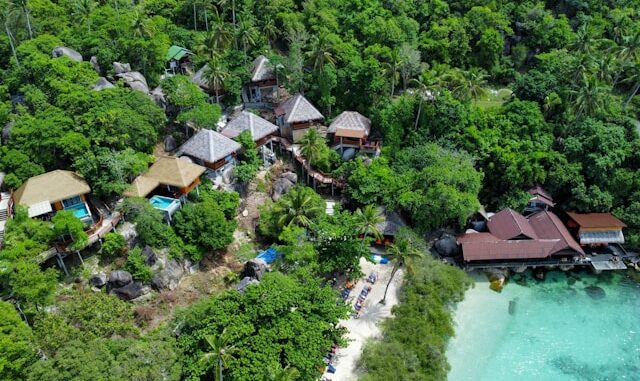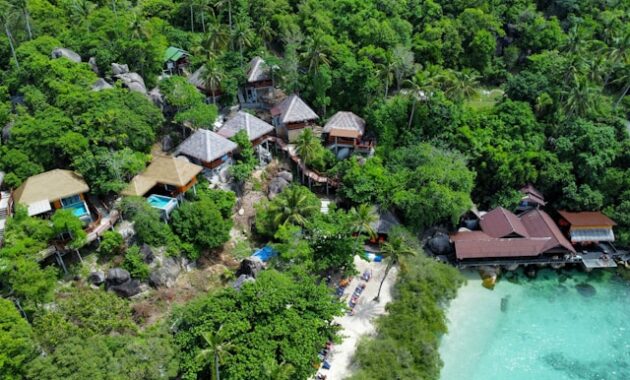
Nestled in the serene waters of Phang Nga Bay, Koh Yao Noi stands as a testament to the enduring spirit and cultural tapestry of Thailand. This tranquil island, often overshadowed by its bustling neighbors, offers a unique glimpse into a world where history, culture, and nature intertwine harmoniously. Our exploration delves deep into the rich history of Koh Yao Noi, tracing its evolution from ancient settlements to its present-day charm.
Ancient Beginnings: The First Inhabitants
The earliest chapters of Koh Yao Noi’s history are shrouded in mystery, but archaeological evidence suggests that the island was once home to sea-faring communities. These early inhabitants were integral parts of the expansive maritime trade networks that connected the Malay Peninsula with the Indian subcontinent and beyond. Artifacts such as pottery shards and tools unearthed on the island indicate a thriving community engaged in both local sustenance and international trade.
Influence of the Srivijaya Empire
Between the 7th and 13th centuries, the powerful Srivijaya Empire, based in Sumatra, extended its influence over Koh Yao Noi. This empire, renowned for its dominance over maritime trade routes, transformed the island into a pivotal stopover for merchants and sailors. The cultural imprints from this era are evident in the island’s traditions, art, and early architectural styles, reflecting a blend of indigenous practices and external influences.
Migration and Cultural Melting Pot
The demographic landscape of Koh Yao Noi underwent significant changes between the 17th and 18th centuries. Migrants from regions like Satun and Trang on the Malay Peninsula settled on the island, bringing with them diverse cultural practices. This migration led to a unique blend of traditions, languages, and customs, enriching the island’s cultural fabric. The local dialect, infused with Malaysian lexical traces, especially in toponyms and flora nomenclature, stands as a testament to this rich cultural amalgamation.
Economic Evolution: From Tin Mining to Agriculture
The 19th and early 20th centuries marked a period of economic transformation for Koh Yao Noi. The island became involved in the burgeoning tin mining industry, attracting a wave of Chinese immigrants seeking employment. This influx introduced new cultural elements, from culinary delights to religious practices, further diversifying the island’s heritage. As global tin demand fluctuated, the island’s economy gradually shifted towards agriculture, with rubber plantations, rice farming, and fishing emerging as primary livelihoods.
World War II: A Period of Occupation
The tumultuous years of World War II saw Koh Yao Noi under Japanese occupation. Owing to its strategic location in the Andaman Sea, the island hosted Japanese military installations, remnants of which, such as bunkers, can still be explored today. The resilience and adaptability of the local populace during this challenging period are commemorated in local narratives and cultural expressions.
Modern Era: Embracing Sustainable Tourism

In recent decades, Koh Yao Noi has gracefully embraced the wave of tourism, positioning itself as a haven for travelers seeking tranquility away from Thailand’s more commercialized destinations. The island’s commitment to sustainable tourism is evident in its community-based initiatives, such as the Koh Yao Ecotourism Club, established in 2002. Visitors can immerse themselves in authentic experiences, from participating in traditional rice planting ceremonies to engaging in homestays that offer genuine insights into the local way of life.
Cultural Festivals and Traditions
The island’s predominantly Thai Muslim community celebrates a plethora of cultural festivals with fervor. Events like Hari Raya Puasa (Eid al-Fitr) and Hari Raya Haji (Eid al-Adha) are marked by communal prayers, feasts, and traditional performances. These celebrations offer visitors a unique opportunity to witness and partake in the island’s rich cultural heritage, fostering a deeper understanding and appreciation of its traditions.
Preserving Natural Beauty
Beyond its cultural allure, Koh Yao Noi boasts pristine natural landscapes. The island is enveloped by mangrove forests, untouched beaches, and is surrounded by dramatic limestone formations characteristic of Phang Nga Bay. Efforts to preserve these natural wonders are evident, with local communities actively engaging in conservation projects, ensuring that the island’s beauty remains unspoiled for future generations.
Conclusion
Koh Yao Noi’s rich history is a mosaic of ancient traditions, cultural exchanges, economic transformations, and resilient communities. As the island continues to evolve, it remains a beacon of sustainable development, harmoniously blending its storied past with the promises of the future. For those seeking an authentic Thai experience, steeped in history and surrounded by natural beauty, Koh Yao Noi stands as an unparalleled destination.